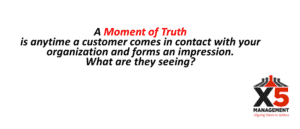-
So many businesses work hard at finding new customers to sustain or grow their business. The reality is, it is harder and takes more effort to find new customers versus retaining existing ones. Simply put, you can’t underestimate the importance of customer retention.
The process has to begin with analytics to learn your current customer retention rate and why customers leave. Knowing the average spend and length of loyalty of a customer will determine the lifetime value to your business. This can be compared to the industry norm within the same geographical area (in case climate and economics play a role).
According to SAS Canada, 50% of consumers say three or fewer brands provide a high level of customer satisfaction. In comparison, 87% of brands say they provide the highest level of satisfaction to drive loyalty—clearly, there is a disconnect here!
Increasing Customer Retention
A few things to consider when analyzing areas of opportunity areas to increase customer retention:
- Does a “thank you” campaign exist to show appreciation for using services?
- Is there a customer service standard in place that is truly remarkable and measurable?
- When customers bring complaints or concerns forward, how do you address them? (Did you know difficult customers can be an asset to your business? Here’s how)
- Do customers feel like they are part of a “community” through your website, social media and shared testimonials?
- Is there a personalized approach to promote an emotional connection by your last touchpoint employee?
- What are the value-added products or services that can make your customer feel they received a perk?
- Do you have a robust customer loyalty program that is viewed internally as an investment, not a cost?
- Today’s customer expects a true experience when making a purchase; does your business offer that?
Of course, it is important to know what your business reputation is within the local industry. And whether there is an obvious brand associated with your business. Customers, and employees, expect a business to have a social responsibility initiative or several, so this is another important consideration.
Invest in Training to Boost Customer Retention
One might think corporate culture is strictly internal. But the stronger a corporate culture, the more effective employees are delivering a positive experience. Customers feel that. (Here are some steps for building positive customer relationships… that last)
Every business should invest in a training program that addresses leadership effectiveness, employee collaboration, team building and overcoming conflict since these areas play an important role in culture. Leadership must lead by example, and ideally, participate in the training.
Another important training area is customer service. Generally, employees want to do well but do not always have the knowledge, confidence or experience to do so. That is when training can help. Follow up your training with performance indicators to ensure each team member starts with a benchmark and something to strive for.
Depending on the nature of the business, customers can lapse. But this isn’t always because they move to a competitor. But rather because they no longer need the service, skill, or product. (Speaking of competition, here are five customer service skills to master to help you stand out from yours) That does not mean they should be forgotten, though.
Lapsed customers will come back. That is if a business stays in touch.
Consider a “We miss you campaign” with a giveaway of value that relates to the business. It is so rare that one receives an actual item of value from a past business that this campaign can also serve as an excellent source of referrals.
Understanding customer priority
Consider the order of customer priority:
- Retention, and how this is measured
- Bring back lapsed customers and measuring each campaign
- Acquire new customers through referrals from existing ones
- Source new customers through effective marketing campaigns
Ask customers why they selected your business early, and ask again what keeps them loyal once you have an established relationship. Typically, people, who are also your customers, do not mind answering surveys if they know you are genuinely interested.
Try rewarding customer loyalty
Studies show it is five to six times costlier to acquire a new customer than to retain an existing one. Reward customers for loyalty with initiatives such as:
- Anniversary of first purchase
- Birthday recognition
- Customer appreciation events
- Special offers for loyal customers
The topic of customer retention and acquisition is a popular one. As a business owner, the important thing is to look at your results and consider how to prioritize retention versus acquisition for more sustainable business growth, and ultimately, profitability.
About Kris
Kris is a business mentor, an executive coach, a strategist and an innovator in developing a corporate culture that leads to customer retention and, ultimately, profitability. She loves working with entrepreneurs who value business growth and sustainability.
Kris also works with X5 Management to offer training solutions to help businesses improve communication, teamwork, customer service, sales and leadership development. These areas are always tailored to suit the specific business needs.
Customer service is the one thing that any business can control, 24/7, 365 days a year. Taking the time and attention to strengthening your team’s soft skills is critical.
Did you learn a lot about customer retention in this post? Here are three more posts to read next:
Is Customer Retention Important? Yes—Here’s Why




